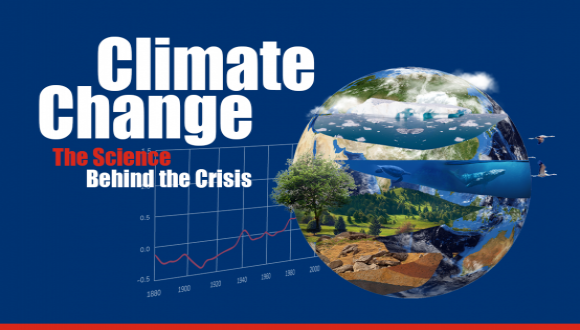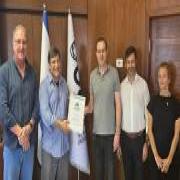The Climate & Me: new online course on edX!
Join Prof. Colin Price on a journey around the world and discover the science behind the Earth's climate and climate change.
A new online course delves into the science behind climate change. What do we know, and what don't we yet know? The course takes students on a journey around the globe, and to the Sun, with the goal of understanding the basic science behind the climate and climate change.
The course is divided into two parts with 6-7 units. Each unit (or lesson) is comprised of several lectures focused on a central topic.
After a brief introduction to global warming and climate change, the course dives into the material, focusing on a different topic in each unit.
To understand our current situation, we first need to look back in time and learn about the Ice Ages, even before humans walked on Earth. How does science explain the changes that led to the Ice Ages over the last million years? Are greenhouse gas concentrations really that high and unprecedented today? And how do we even know what those gas concentrations were before we had the tools to measure them?
The next unit takes us all the way to the Sun to understand our primary source of energy, how it drives the climate system, and the changes that occur over time as Earth orbits the Sun and rotates on its axis.
We then return to Earth and learn about what determines the Earth's temperature by examining the energy we receive from the Sun compared to the energy Earth emits, and the balance between them.
Having understood the factors determining Earth's temperature, the next most important characteristic of our climate system is water: water vapor, clouds and rain. How are they formed, and what will happen if we continue emitting greenhouse gases into the atmosphere? While clouds bring rain, they also play a significant role in both cooling and warming the Earth. What will happen to clouds as Earth continues to warm? An entire unit is dedicated to the subject of clouds and their crucial role in the climate system.
Temperature changes around our planet lead to changes in atmospheric pressure, the factor responsible for the formation of winds. What determines the path and strength of winds, and why are they important?
From the atmosphere, we dive into the oceans, which cover 70% of Earth's surface, to understand how they affect and are affected by the climate. How are ocean currents formed, and what will happen to sea levels in the future?
Next, we turn to water in its frozen form – ice! Our next stop will be in the frozen regions of Earth – the cryosphere – where we will discover the drama unfolding as the system changes rapidly in response to climate change. We will understand how significant this change is and how the melting ice due to warming could create a vicious cycle of increased warming.
After cooling off in the cold temperatures of the poles, we return to the warmer regions of Earth and talk about plant life – the biosphere. Forests and plants play a crucial role in our climate system on Earth in general, and in our cities in particular. A healthy biosphere will play an important role in influencing Earth's temperatures in the future.
From here, we will journey to an even hotter area and climb Earth's volcanoes. We will understand how large volcanic eruptions can affect the climate and even cool the Earth.
After studying all of the important components of the climate system, we will try to predict what the climate will be like in 2050 or 2100. How do we know what will happen in the future and what are the possible future scenarios?
The last unit of the course focuses solely on solutions. This unit is dedicated to the question of what can be done to solve the climate crisis. It demonstrates that there is light at the end of the tunnel – but only if we act quickly to make change.
Join Prof. Colin Price on a journey to understand the science behind the climate crisis, learn what can be done, and be part of the solution!
The course is open for free learning with no certification path. For more details and registration, click here.
If you haven’t joined TAU's Climate Initiative's mailing list to get the newsletter directly to your inbox, please join here.





